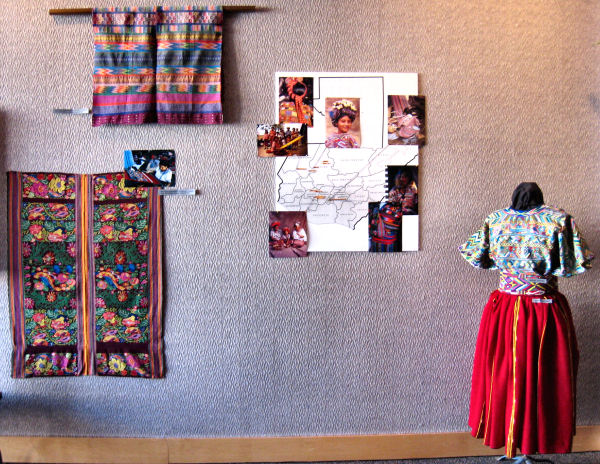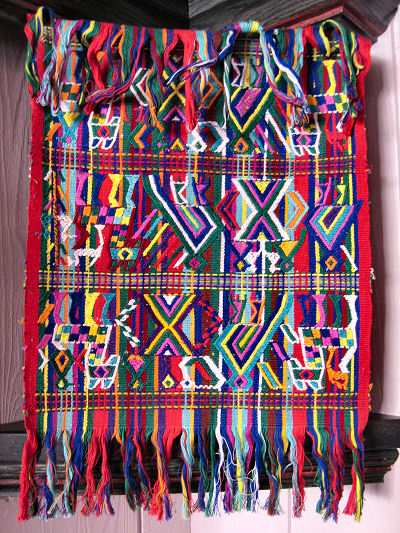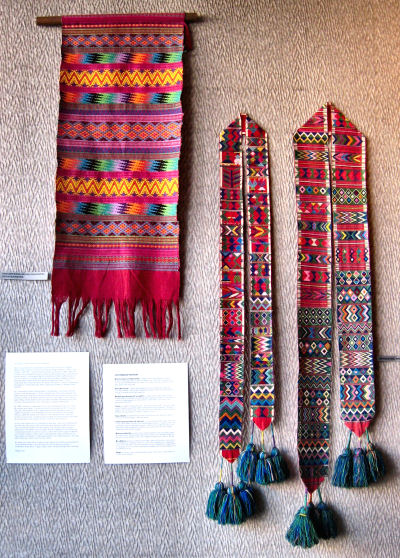| As I continued to take study groups to
Guatemala, I purchased textiles directly from the weavers or from cooperatives.
The prices paid did not reflect the hours and hours of work women put into
weaving these items, mostly on back-strap looms tied to a post or roof
beam in their family's patio. Many of the women selling textiles had been
widowed during the civil war and weaving was their only way to support
themselves.
By 1988 I moved to Guatemala City to set up programs there full-time. My mother and father, Carolyn and John Cain, joined me for Christmas that year. We traveled to the regions where these textiles come from: rugged mountains, lush vegetation during rainy season, little adobe houses scattered among corn fields on the mountainsides, beautiful textiles at every turn, including those spread over the bushes to dry after being washed in the streams and at community wash basins. |


